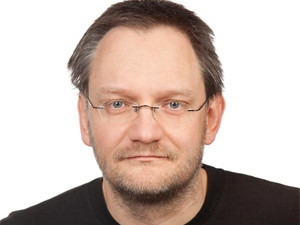
Application programming interfaces (APIs) are the glue which makes the Internet of things (IoT) possible.
That's the word from Holger Reinhardt, senior principal, Business Unit Strategy at Layer 7 Technologies, a CA Technologies company, who points out that APIs are underpinning the app economy and Web eco system.
"APIs reduce friction 'to get things done'. In a way, they parallel the rise of cloud computing - dramatically lowering the entry and usage barrier in today's increasingly digital economies. Whereas cloud computing commoditises IT infrastructure, APIs democratise access and use. APIs facilitate unbundling of monolithic services and enable new business models," says Reinhardt.
"What is a striking is that after the unprecedented rise and reach of social networks like Facebook or Twitter, we are now witnessing a second generation of network (or platform) businesses like Lyft, Uber, Airbnb, Etsy...'virtual' networks connecting people with physical things like apartments or cars," he adds.
He believes it will be fascinating to see if the increase in connectivity of "things" will lead to an increase in such kind of new economic activities, the so-called share economy and enable the re-emergence of artisan entrepreneurs.
Hype vs reality
Reinhardt is of the view that it is very important to separate (marketing) hype from reality in the ongoing IoT debate.
"One of the API trends we are watching very carefully is the emergence of asynchronous publish/subscribe patterns in addition to the synchronous request/response patterns," he says.
"Our physical world is asynchronous, not following a neat pattern of request and response."
He also explains that publish and subscribe in itself is nothing new, as companies in the financial industry have long been using protools like MQ. However, he argues that publish and subscribe is not everything - there is also the notion of presence.
"A connected thing might appear and then disappear. Interestingly enough, some of the semantics of IoT match very closely those of protocols used by chat programs like Google Chat (XMPP) and Facebook Messenger (MQTT). Another strong contender is the IETF protocol called CoAP (Constrained Application Protocol). But that we might not need a new protocol to archive this kind of interactions is shown by the use of Twitter for a variety of IoT showcases."
What is new is the sheer magnitude of connected "things" which might come online, Reinhardt reckons.
"But even there is a healthy debate between those who want to connect everything to the cloud (a hub and spoke like approach) and those who argue that 'things' might first and for most communicate within a specific domain like an apartment, a house, a city block etc. And that those domains are bridged by smart hubs which aggregate and filter data from one domain and only (re)publish data of interest to the adjacent domain."
Next big wave?
In other words, Reinhardt says, instead of an apartment blasting all data into the cloud and making it accessible, the data might be collected and processed by a local apartment hub and only data relevant for the apartment block is shared with the "house" hub, and so on.
"Security and privacy become even more important as our digital shadow of our physical world continues to grow. But even that in itself is a new trend, but has been extensively publicised since smartphones and social networks allow unprecedented meta data collection and analysis. And everything which is somehow connected and accessible remotely ultimately increases the surface for cyber attacks."
He also points out that many companies and organisations are trying to show their relevance for IoT because they are afraid to miss the next big wave in computing.
"But five people could probably not agree what the Internet of things is in reality. Cisco calls it Internet of Everything, GE calls it the Industrial Internet, W3c calls it the Web of Things, etc. I think everyone agrees that something is shifting and that ubiquitous connectivity, infinite cloud compute power and hardware commoditisation is creating a tidal wave of change and opportunity.
"In general, I always recommend to look at the media hype generated by companies with a healthy dose of critical thinking. I do think that developers should harness their own creativity and look for real problems to solve and keep experimenting and always learning," Reinhardt concludes.
Share